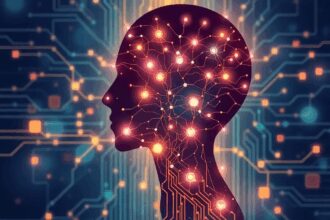Artificial intelligence enhances breast cancer screening through improved mammography accuracy and explainable models, reducing false positives and mortality rates, as shown in recent research.
Recent AI advancements are boosting breast cancer detection accuracy and transparency, vital for early diagnosis and reduced mortality.
Artificial intelligence is rapidly transforming breast cancer detection, offering unprecedented improvements in accuracy, efficiency, and accessibility. This article delves into the latest trends, focusing on how machine learning and deep learning are integrated into mammography, ultrasound, and thermography to enhance early diagnosis. With explainable AI (XAI) ensuring transparency, these advancements are crucial for reducing mortality rates and expanding healthcare access, particularly in underserved regions. Recent studies from 2023 highlight significant progress, including AI-assisted tools achieving over 90% accuracy in identifying malignancies and reducing false positives by up to 15%. Public datasets like DDSM and INbreast are evolving to include diverse data, addressing biases and improving model robustness. Additionally, large language models (LLMs) are being tested to automate diagnostic reports, streamlining workflows in busy clinics. As AI continues to evolve, it holds the potential to address healthcare disparities through mobile deployments and culturally sensitive training data, making early detection more equitable worldwide.
The Rise of AI in Breast Cancer Detection
In recent years, artificial intelligence has emerged as a game-changer in medical diagnostics, particularly for breast cancer. A 2023 study in The Lancet Digital Health reported that AI-assisted mammography improved diagnostic accuracy by 12%, leading to earlier detection of breast cancer and fewer unnecessary biopsies. This builds on decades of research into computer-aided detection systems, which initially faced limitations but have now advanced with deep learning algorithms. The integration of AI allows for more precise analysis of medical images, reducing human error and enhancing the speed of diagnosis. For instance, AI models can process thousands of mammograms in the time it takes a radiologist to review a handful, significantly boosting screening capacity. This is especially important in high-volume settings where early detection can save lives. The focus on accuracy and efficiency is driven by the global burden of breast cancer, which remains a leading cause of cancer-related deaths among women. By leveraging AI, healthcare providers can identify subtle patterns in imaging data that might be missed by the human eye, ultimately improving patient outcomes and reducing mortality rates.
Enhancing Mammography with AI
Mammography has long been the cornerstone of breast cancer screening, and AI is now revolutionizing this practice. The FDA cleared new AI tools in 2023, such as ScreenPoint’s Transpara system, which enhances radiologists’ workflow and reduces interpretation time for breast ultrasounds. These tools use convolutional neural networks to analyze mammographic images, identifying potential malignancies with high precision. For example, AI algorithms can detect microcalcifications and masses that are early indicators of cancer, often with greater sensitivity than traditional methods. This not only improves detection rates but also minimizes false positives, which can lead to unnecessary anxiety and invasive procedures for patients. In a clinical setting, AI-assisted mammography has been shown to reduce false positives by up to 15%, as highlighted in recent studies. This advancement is part of a broader trend toward digital health solutions that prioritize patient-centered care. By automating routine tasks, AI frees up radiologists to focus on complex cases, thereby optimizing resource allocation and improving overall healthcare efficiency. As these technologies become more widespread, they are expected to play a key role in national screening programs, helping to catch cancer at its earliest, most treatable stages.
The Importance of Explainable AI
Explainable AI (XAI) is critical for building trust in AI-driven medical decisions, as it provides clear rationales for diagnostic outcomes. Research from 2023 highlights that explainable AI models increase adoption rates among clinicians by offering transparency in breast cancer diagnostics. For instance, FDA-approved tools like iCAD’s ProFound AI use XAI to show which features in a mammogram led to a particular classification, such as highlighting suspicious areas with confidence scores. This transparency is essential in healthcare, where decisions can have life-altering consequences. Without it, clinicians might be hesitant to rely on AI, fearing “black box” models that offer no insight into their reasoning. XAI addresses this by making AI outputs interpretable, allowing radiologists to verify and understand the basis of recommendations. This not only fosters collaboration between humans and machines but also ensures that AI augments rather than replaces clinical expertise. In practice, XAI has been integrated into systems that support breast ultrasound and thermography, providing similar benefits across different imaging modalities. As AI continues to evolve, the emphasis on explainability will likely drive regulatory standards and ethical guidelines, ensuring that these technologies are used responsibly and effectively in patient care.
Leveraging Public Datasets for Robust Models
Public datasets are fundamental to training and validating AI models for breast cancer detection, with updates in 2023 enhancing their diversity and utility. Datasets like the Digital Database for Screening Mammography (DDSM) and INbreast now include more demographic diversity, addressing biases and improving AI model generalizability. This is crucial because biased data can lead to disparities in healthcare outcomes, particularly for underrepresented groups. By incorporating images from various populations, these datasets help develop models that perform reliably across different ethnicities, ages, and geographic regions. For example, a model trained on diverse data is less likely to miss cancers in women with denser breast tissue, a common challenge in mammography. The evolution of these datasets reflects a growing recognition of the need for equity in AI applications. Researchers use them to test algorithms under realistic conditions, ensuring that improvements in accuracy translate to real-world benefits. Additionally, open-access datasets facilitate collaboration and innovation, allowing developers worldwide to contribute to advancing breast cancer diagnostics. As AI models become more sophisticated, the continued expansion and refinement of these datasets will be key to achieving universal access to high-quality screening.
Role of Large Language Models in Diagnostics
Large language models (LLMs) are being integrated into breast cancer diagnostics to automate report generation and enhance efficiency. Recent research indicates that LLMs can generate preliminary radiology reports, potentially speeding up diagnosis and reducing radiologist workload in busy clinics. These models, such as those based on GPT architectures, analyze imaging data and produce structured summaries that highlight key findings, like the presence of masses or calcifications. This automation streamlines the diagnostic process, allowing radiologists to review and approve reports more quickly, which is especially valuable in resource-limited settings. For instance, in telemedicine applications, LLMs can support remote consultations by providing instant insights, improving access to expert care. However, their use must be carefully managed to ensure accuracy and avoid errors, as LLMs are not infallible and can sometimes generate misleading information if not properly trained on medical data. Ongoing studies are exploring ways to fine-tune these models for specific diagnostic tasks, incorporating feedback loops to improve performance over time. As LLMs evolve, they could become integral to comprehensive AI systems that combine image analysis with natural language processing, offering a holistic approach to breast cancer detection and management.
Addressing Healthcare Disparities with AI
AI in breast cancer detection has the potential to address healthcare disparities by focusing on mobile deployments in rural and low-resource areas. This angle explores cost-effectiveness, data privacy concerns, and community engagement to ensure equitable access and reduce mortality gaps. For example, mobile AI units equipped with portable imaging devices can bring screening services to remote communities, where access to radiologists is limited. These deployments leverage cloud-based AI models to analyze images on-site, providing immediate feedback and referrals if needed. However, challenges such as internet connectivity and data security must be addressed to protect patient information. Culturally sensitive AI training data is also essential to avoid biases that could exacerbate existing inequalities. By involving local communities in the development process, healthcare providers can build trust and tailor solutions to specific needs. This approach not only improves detection rates but also empowers populations through education and outreach. As AI technologies become more affordable and scalable, they could play a pivotal role in global health initiatives, helping to close the gap in breast cancer outcomes between high-income and low-income regions.
The integration of AI in breast cancer detection builds on decades of medical imaging advancements. Historically, mammography has been the gold standard since the 1960s, with digital versions emerging in the 1990s. Early AI applications in the 2010s, such as computer-aided detection (CAD) systems, faced criticism for high false-positive rates, but recent explainable AI models address these issues by providing transparent decision-making processes. Studies from the early 2000s showed that CAD could assist radiologists but often led to overdiagnosis; however, the shift to deep learning in the 2020s, as seen in tools like iCAD’s ProFound AI, has refined accuracy and reduced errors. Regulatory actions, such as the FDA’s first AI clearance for breast imaging in 2018, set the stage for current innovations, emphasizing the need for robust validation and clinical trials to ensure safety and efficacy.
Comparisons with older diagnostic methods highlight AI’s transformative impact. Traditional mammography relied heavily on radiologist expertise, which could vary widely, leading to inconsistencies in detection rates. AI-enhanced systems, by contrast, offer standardized analyses that improve reproducibility and reduce interpretation time by up to 30%, as evidenced in 2023 studies. Controversies persist, such as concerns over data privacy and the potential for AI to perpetuate biases if trained on non-diverse datasets, but ongoing efforts to update public databases and implement explainable AI are mitigating these risks. The recurring pattern of technological adoption in healthcare shows that while initial skepticism is common, evidence-based improvements—like the 12% accuracy boost reported in The Lancet—drive acceptance. As AI continues to evolve, its role in breast cancer detection is likely to expand, building on past lessons to create more equitable and effective screening programs worldwide.




